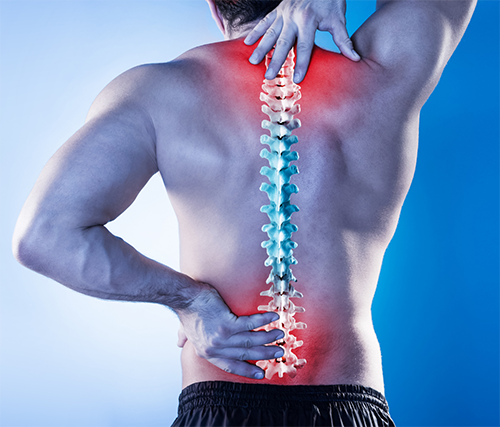NIH/HEAL/NCCIH R66/R33
Funding Period: 9/01/2022 – 8/31/2025
PIs: Ajay D. Wasan, MD, MSc; Kang Kim, PhD; Jiantao Pu, PhD
Video: Biomarker for Myofascial Pain
Video: Seeking Research Participants for Low Back Pain Study
To learn more about this research study, call 412-665-8052 (landline) or email myofascialpain@groups.pitt.edu.
 Introduction
Introduction
Myofascial pain, a significant contributor to chronic low back pain, necessitates a nuanced diagnostic approach beyond traditional physical examinations. This study addresses the clinical imperative for a precise biomarker to discern myofascial pain components, utilizing cutting-edge ultrasound technology.
Objective
 The study aims to integrate advanced ultrasound measures, such as shear wave elastography and dynamic fascia tissue deformation, to formulate a comprehensive biomarker for the myofascial aspect of chronic low back pain. This innovative approach goes beyond identifying trigger points, providing a crucial diagnostic tool with immediate clinical applications.
The study aims to integrate advanced ultrasound measures, such as shear wave elastography and dynamic fascia tissue deformation, to formulate a comprehensive biomarker for the myofascial aspect of chronic low back pain. This innovative approach goes beyond identifying trigger points, providing a crucial diagnostic tool with immediate clinical applications.
Methodology
INITIAL ASSESSMENT
-
Conduct detailed ultrasound assessments and standardized physical exams on 160 subjects, categorized into phenotypic groups with and without chronic low back pain, each further divided based on the presence of painful trigger points.
-
Correlate ultrasound measures with clinical phenotypes to establish meaningful associations.
MACHINE LEARNING MODEL CONSTRUCTION
 Employ deep learning techniques to create explainable models integrating ultrasound measures for accurate classification and prediction of myofascial components in chronic low back pain, considering the presence of latent and/or active trigger points.
Employ deep learning techniques to create explainable models integrating ultrasound measures for accurate classification and prediction of myofascial components in chronic low back pain, considering the presence of latent and/or active trigger points.-
Report performance metrics, including area under the curve, sensitivity, specificity, and negative and positive predictive values.
CLINICAL TRIAL
-
Conduct a single-blinded, randomized controlled trial comparing dry needling versus sham needling in 80 patients with chronic low back pain and active trigger points.
-
Utilize ultrasound measures and standardized examinations to assess myofascial pain intensity before and after intervention.
-
Evaluate the predictive capability of deep learning models on myofascial pain intensity and its changes post-needling.
Anticipated Outcomes
The culmination of this research is expected to yield a software module that can be seamlessly integrated into existing clinical ultrasound machines. This transformative tool will empower clinicians to accurately assess myofascial components in musculoskeletal pain, marking a significant advancement in the field of diagnostics.
